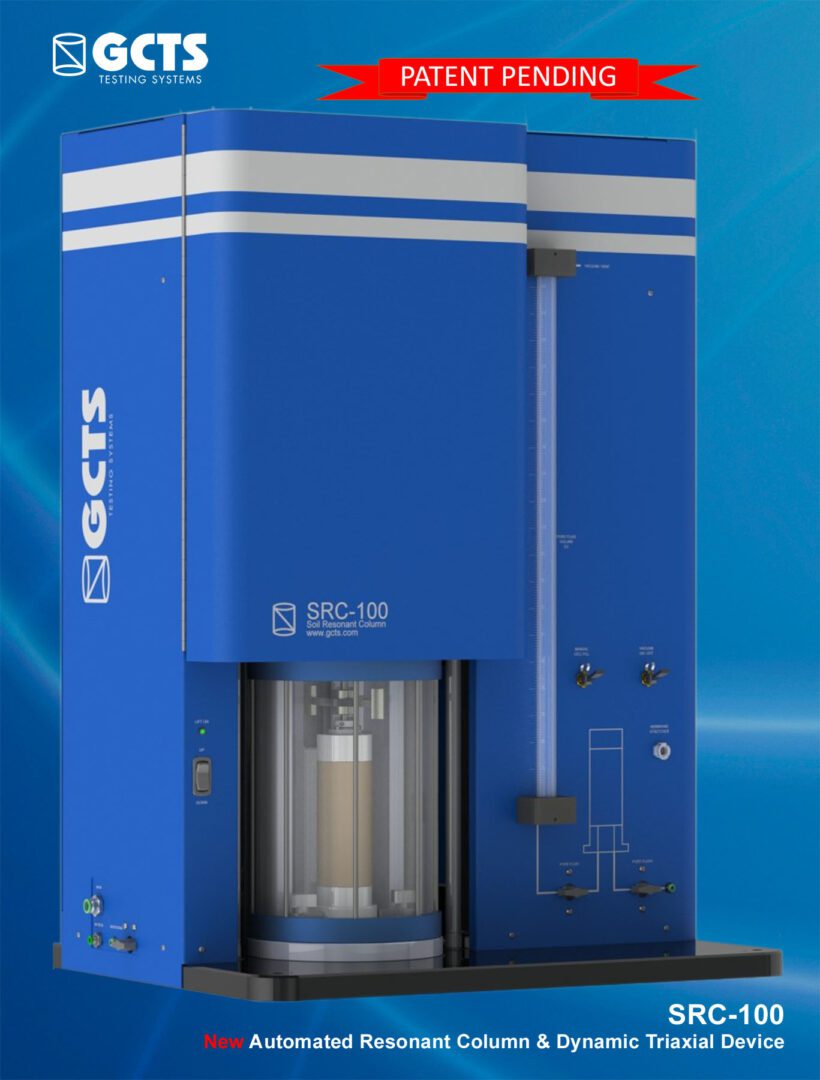Dynamic soil properties of a soil specimen are important parameters for the analysis and design of structures required to resist dynamic loads such as earthquake shaking, machinery vibration, traffic loading, etc. The resonant column test is a commonly used laboratory test for measuring dynamic soil properties. The resonant column test is performed by vibrating a solid or hollow soil specimen to find the first-mode resonant frequency of the soil specimen, which is then used to determine additional dynamic soil properties. Currently, resonant column systems require a high level of expertise and significant time and effort by the user. For example, current systems require that some of the electronics be removed to access the specimen container, and thus these electronics must be removed and then reinstalled between each test. In addition, in order to test different ranges of frequencies, different sensors must be installed within the test chamber, further requiring modification of the testing equipment during testing. This makes performing a resonant column test an expensive option and limits the number of situations where the benefits of performing a resonant column test outweigh the costs.
Current resonant column systems also have limited torque capacity, angular deformation, and vertical deformation through consolidation, and the current method of applying torsional stress to induce the vibrations also causes a bending stress, which interferes with the resonant column test. Electronics within current resonant column systems are exposed to changing pressure and moisture, which leads to corrosion. All of these characteristics of current resonant column systems makes them less valuable and harder to operate, and therefore, less useful.
The new GCTS SRC-100 Resonant Column Device introduces several innovations over existing test systems to greatly simplify the performance of resonant column and torsional shear tests. These innovations include features to measure the dynamic soil properties more accurate and reliable and without the complexities of existing systems.
This device introduces the following unique innovations:
- Stiff half-circle reaction support (allows easy and fast specimen setup)
- Precise laser sensor to measure angular deformations from 1% to 2×10-5% strain
- External (through cell wall) measurements (no re-positioning necessary)
- Torque motor suspended on springs (does not rest on top of specimen) and guided on precise linear bearings
- External torque motor (not susceptible to corrosion while using water as confining medium inside the cell)
- Load frame to apply axial loads through torque motor for anisotropic consolidation
The new GCTS SRC-100 Resonant Column Device has evolved into a simple to use testing system using modern sensors and computerized electronics that perform this test efficiently, automatically, and most importantly, accurately.
The time to perform a full test has been reduced greatly as it is not necessary to install delicate instrumentation to setup each soil specimen to be tested in this device. In addition, the testing procedures with this device have been greatly simplified requiring only a minimum of operator training to obtain meaningful results.
This device offers the necessary components to easily convert the SRC-100 into a full dynamic & stress path triaxial system to perform liquefaction, cyclic strength, resilient modulus, as well as CU, CD and UU static triaxial tests. This system can also be fitted with bender elements as well as unsaturated platens.
All these improvements greatly increase productivity and minimize operator training effort, significantly reducing the life cycle cost of the GCTS SRC-100 Resonant Column Device.

